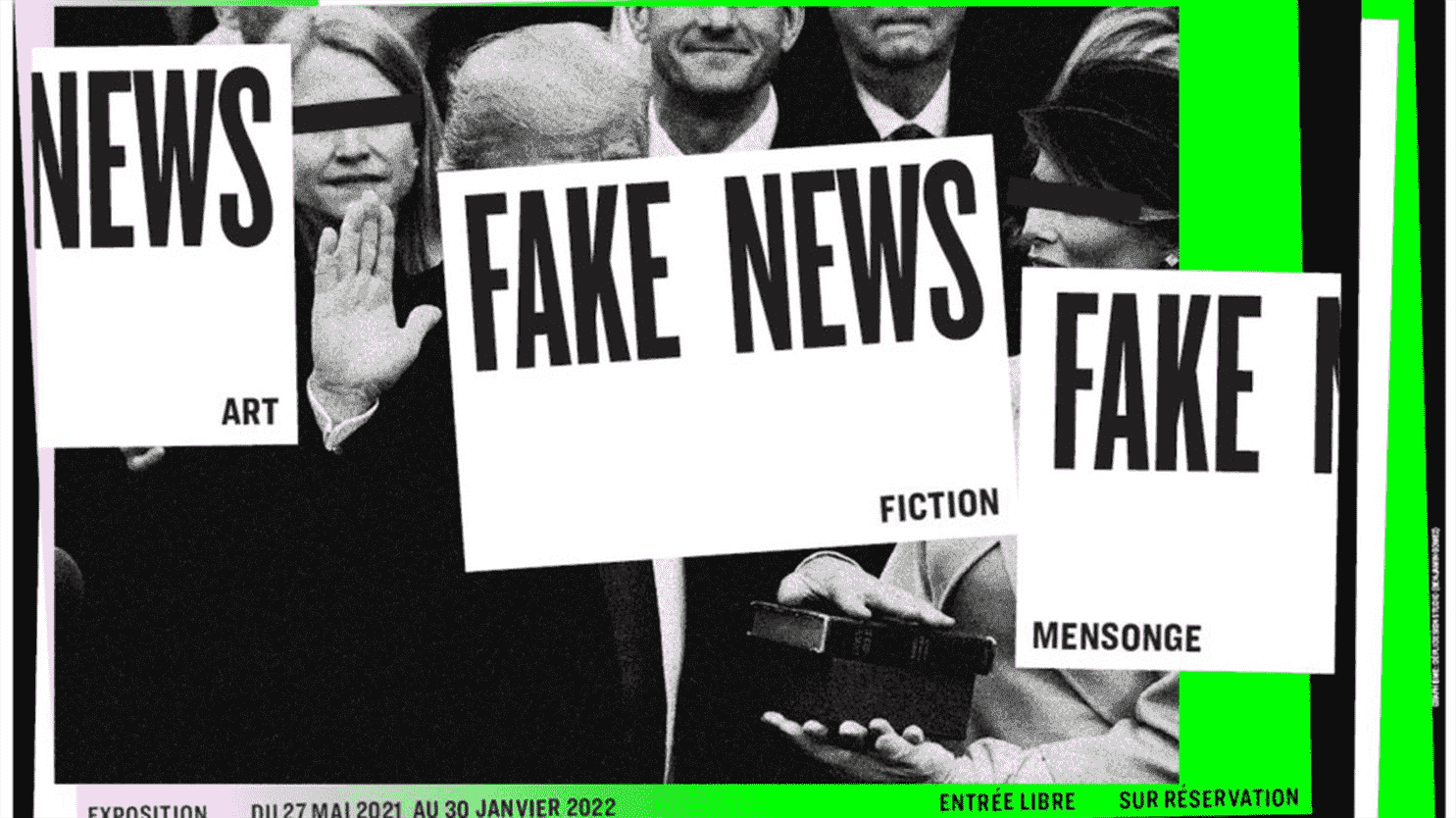Le Vrai du Faux Junior, a meeting for verifying and deciphering information made with teenagers and their teachers is devoted this week to an exhibition that can be a good idea for a family outing during the holidays.
It’s called “Fake news. Art, fiction, lie”. It is at the EDF Foundation in Paris until January 30, 2022. The idea of this artistic journey is to rely on some twenty works to bring people to think about the way in which false information is created and disseminated. The third media class from Pablo Picasso college, in Montesson in the Yvelines, visited this exhibition for Le Vrai du Faux Junior.
One of the first works in front of which the pupils stopped is that of Alain Josseau, entitled G255. It shows behind the scenes of the making of a fake video image. A cardboard model represents a destroyed city, filmed on a mobile phone, with the possibility of embedding war images behind it. “I find it very interesting, comments Alison and it is true that if I had seen that on the news I would have believed it and I would never have thought that it was a green background with a model “. Another work particularly marked Thomas. “This is the work, he explains, which is called Fake Truth. It is an artificial intelligence which identifies all the sites where there is marked fake truth on the internet and we notice that there are hundreds of them per day which are referenced “. The work in question is intended to measure the spread of false information. Researchers have also shown that the fake goes faster than the real, that it is more viral. The work evoked by Thomas contains a small computer and a mini printer and effectively makes it possible to print, in real time, the reference of any article or message which on the Internet contains the expression “fake truth”: false truth.
A video animation makes it possible to visualize the speed of propagation through the world of some of the false information disseminated around covid 19. The opportunity for the students to become aware of the way in which rumors and false information travel, sometimes in a few seconds. time.
“Fake news can spread and be created very quickly. There is a lot of information circulating on social media at the moment, so it can be distorted very quickly “; comments a student. “For example this video made me laugh, so I will want to share it without necessarily checking the sources“, adds another.
The students therefore realized, through this exhibition, that everyone can help spread false information, because he finds a funny content, by ignorance or by credulity, Certain publications, explains the mediator of the exhibition who accompanies the pupils, are also relayed because they play on our emotions. Finally, sometimes what prompts to relay a post is the desire to please and attract subscribers. The exhibition also highlights the remuneration granted to certain content distributors, depending on the number of people who follow them. This is what denounced three paintings by Singaporean artist Kevin Lau, in front of which Saer and his teacher stopped. One of them is a trapped “like” comment. “The three paintings point to the same thing: we buy you “, explains the teacher. The college student admits to being himself sensitive to comments and “likes” under social media posts.
If the first two parts of the exhibition are devoted to the production and dissemination of false information, the last proposes to reflect on the consequences of this dissemination and the possible remedies: disconnection staged in certain works, verification work, such as the one led by Franceinfo’s Cellule Vrai du Faux and media education work carried out with students. Each visitor leaves the exhibition with a small map on which we find tips for deciphering the information circulating on the internet, via a series of questions to ask: who is at the origin of this information or this photo? Is the message particularly spectacular or anxiety-provoking? Is it based on reliable sources? Hasn’t this image already been used in another context? Is this information also relayed by professional media?
These tips support and complement the work that students have done in recent weeks for True from False Junior. Their teachers also say that this work is starting to bear fruit. “Schoolchildren no longer go to look for information on a single site but now cross sources, relying on generalist sites “, reports for example Cyrille Bertrand, English teacher at Jules Ferry college in Sainte-Geneviève-des-Bois, in Essonne. Some students indicated that they had changed their social media profiles. A similar development has been observed by Lionel Vighier, pprofessor of letters at the college Pablo Picasso in Montesson in the Yvelines. “What remains to work, he nuances, is contextualization: going deep into the information to understand what we are really talking about“. What the students will continue to do, with the support of franceinfo.
The Fake News exhibition is on view at the EDF Foundation in Paris until January 30. It is accompanied by an educational package and a training webinar, intended for teachers, designed by CLEMI, the center for media and information education.
